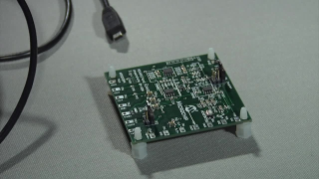Softei & Microchip RN2903 LoRa Technology Mote
Win a Microchip RN2903 LoRa® Technology Mote (DM164139) from Softei and if you don’t win, receive a 15% off voucher, plus free shipping for one of these boards.
The RN2903 LoRa Mote is a LoRaWAN™ Class A end-device based on the RN2903 LoRa modem. The RN2903 is a fully-certified 915 MHz module based on wireless LoRa technology. The RN2903 utilizes a unique spread spectrum modulation within the Sub-GHz band to enable long range, low power, and high network capacity. As a standalone battery-powered node, the Mote provides a convenient platform to quickly demonstrate the long-range capabilities of the modem, as well as to verify inter-operability when connecting to LoRaWAN v1.0 compliant gateways and infrastructure.
The Mote includes light and temperature sensors to generate data, which are transmitted either on a fixed schedule or initiated by a button-press. An LCD display provides feedback on connection status, sensor values and downlink data or acknowledgements. A standard USB interface is provided for connection to a host computer, providing a bridge to the UART interface of the RN2903 modem. As with all Microchip RN family of products, this enables rapid setup and control of the on-board LoRaWAN protocol stack using the high level ASCII command set.











